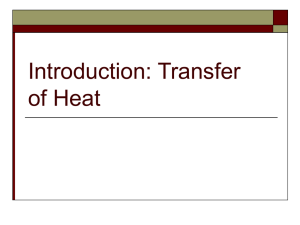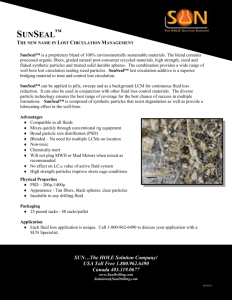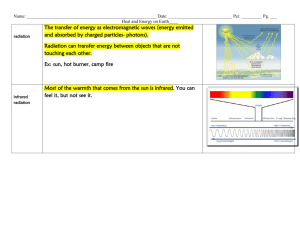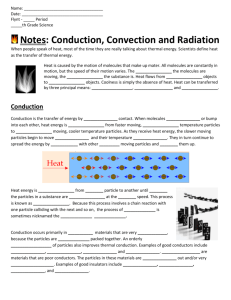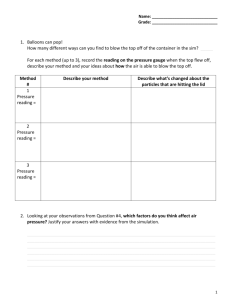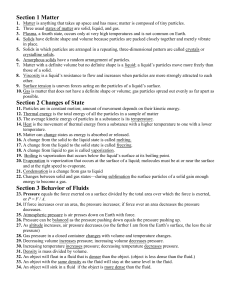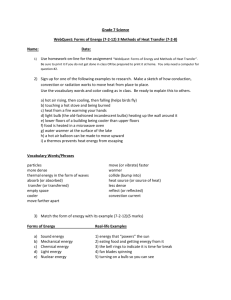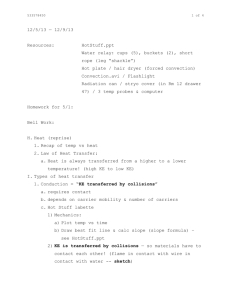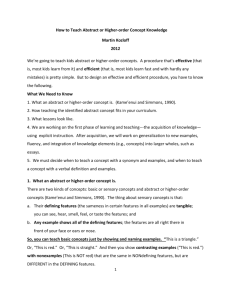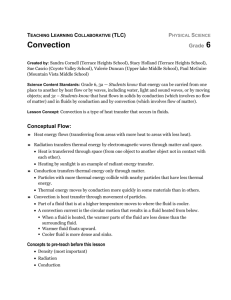Lesson 2 notes – convection - science
advertisement
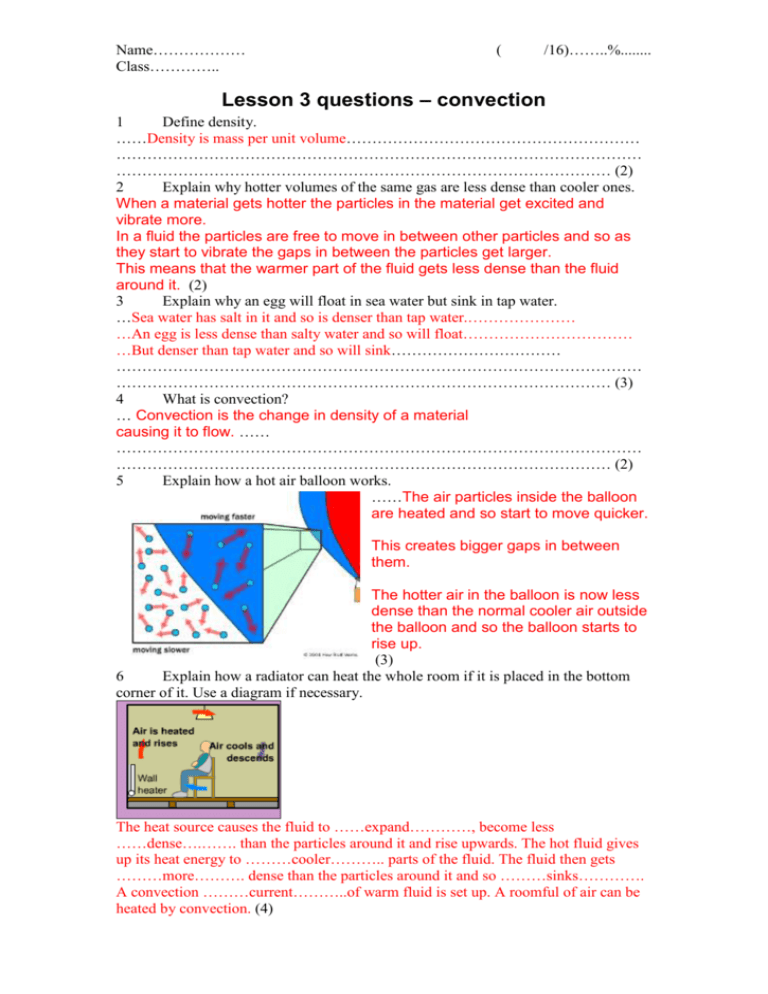
Name……………… Class………….. ( /16)……..%........ Lesson 3 questions – convection 1 Define density. ……Density is mass per unit volume………………………………………………… ………………………………………………………………………………………… …………………………………………………………………………………… (2) 2 Explain why hotter volumes of the same gas are less dense than cooler ones. When a material gets hotter the particles in the material get excited and vibrate more. In a fluid the particles are free to move in between other particles and so as they start to vibrate the gaps in between the particles get larger. This means that the warmer part of the fluid gets less dense than the fluid around it. (2) 3 Explain why an egg will float in sea water but sink in tap water. …Sea water has salt in it and so is denser than tap water.………………… …An egg is less dense than salty water and so will float…………………………… …But denser than tap water and so will sink…………………………… ………………………………………………………………………………………… …………………………………………………………………………………… (3) 4 What is convection? … Convection is the change in density of a material causing it to flow. …… ………………………………………………………………………………………… …………………………………………………………………………………… (2) 5 Explain how a hot air balloon works. ……The air particles inside the balloon are heated and so start to move quicker. This creates bigger gaps in between them. The hotter air in the balloon is now less dense than the normal cooler air outside the balloon and so the balloon starts to rise up. (3) 6 Explain how a radiator can heat the whole room if it is placed in the bottom corner of it. Use a diagram if necessary. The heat source causes the fluid to ……expand…………, become less ……dense….……. than the particles around it and rise upwards. The hot fluid gives up its heat energy to ………cooler……….. parts of the fluid. The fluid then gets ………more………. dense than the particles around it and so ………sinks…………. A convection ………current………..of warm fluid is set up. A roomful of air can be heated by convection. (4)

